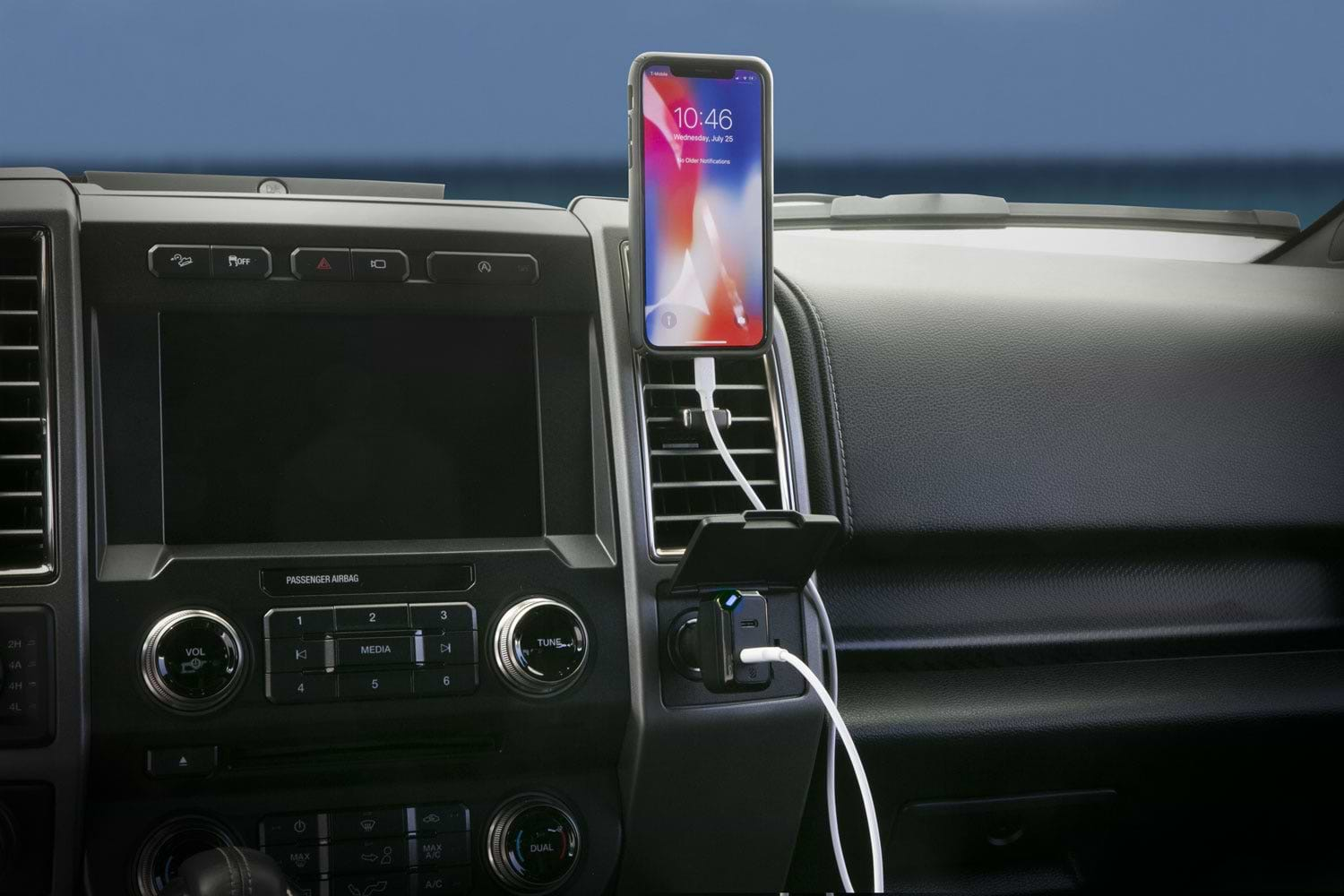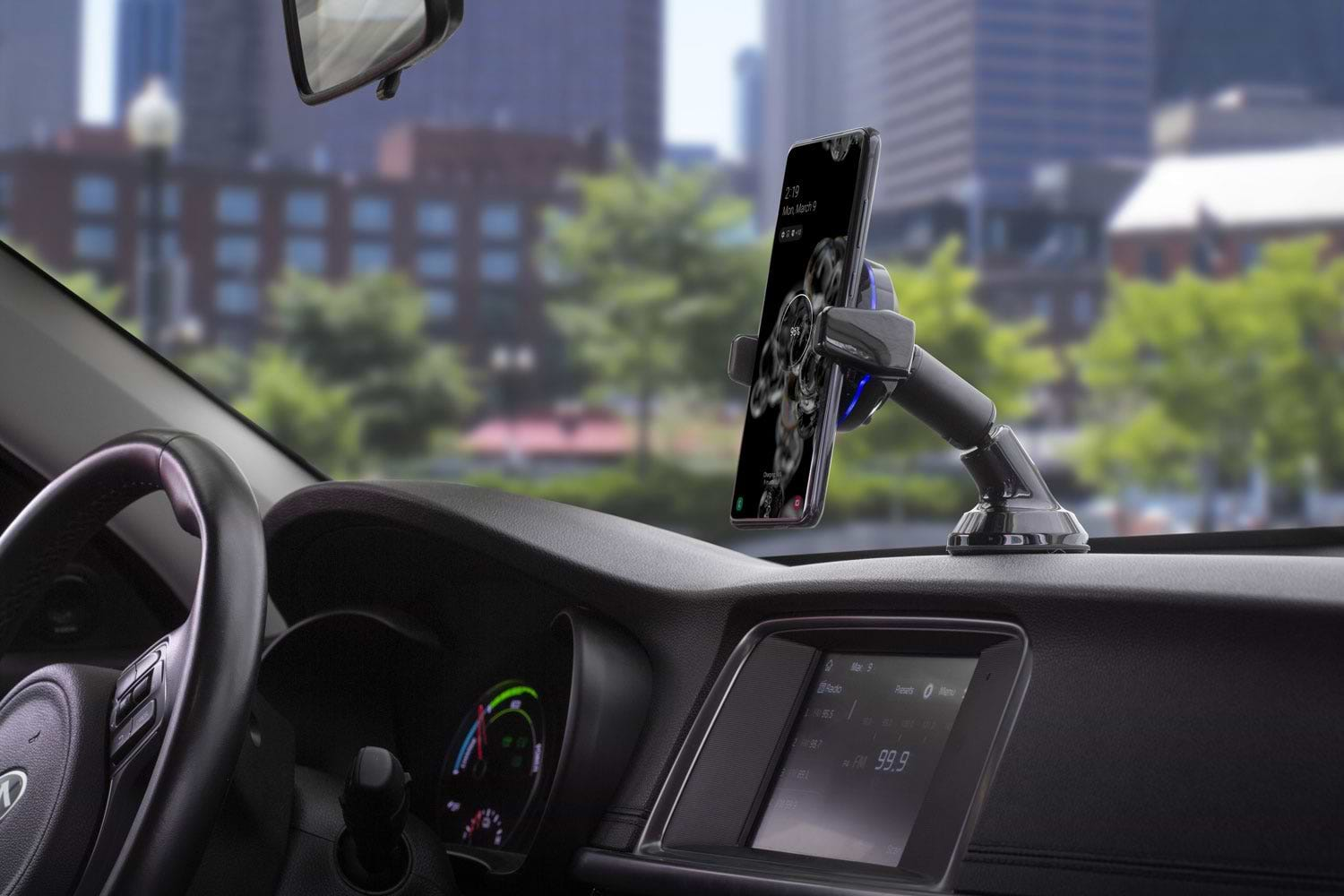Troubleshooting: Phone Not Charging in Car

In today's fast-paced world, having a fully charged phone while on the go is crucial. Whether you're using your smartphone for navigation, streaming music, or attending to important phone calls, a dead battery can be a major inconvenience. If you're facing the frustrating issue of your phone not charging in your car, don't worry - we're here to help.
In this article, we'll explore the basics of car phone charging, identify potential problems, provide a step-by-step troubleshooting guide, offer preventive measures and maintenance tips, and discuss when it's time to seek professional help.
Understanding the Basics of Car Phone Charging
Before diving into troubleshooting, it's essential to understand how phone charging works in a car. Most modern cars are equipped with USB ports that allow you to charge your phone. These ports draw power from the vehicle's battery and convert it to a suitable voltage for charging your device. It's important to note that not all USB ports in cars provide the same level of power output.
The Role of USB Ports in Car Charging
USB ports in cars are designed to provide power for charging smartphones and other USB-powered devices. However, their availability and power output can vary depending on the car model and manufacturer. Some USB ports may only offer a limited amount of power, which can result in slower charging times or even prevent charging altogether.


Common Types of Phone Chargers Used in Cars
There are different types of phone chargers commonly used in cars. The most common ones include USB-A chargers, USB-C chargers, and wireless chargers. USB-A chargers are the traditional USB ports that have been widely used for charging devices. USB-C chargers, on the other hand, are becoming increasingly popular due to their increased power output and faster charging capabilities. Wireless chargers use induction technology to charge compatible devices without the need for cables.
USB-A chargers, also known as Type-A chargers, have been the standard for many years. They have a rectangular shape with a single flat side and are compatible with most USB devices. USB-A chargers typically provide a power output of 5 volts and 1 amp, which is sufficient for charging smartphones and other small devices. However, they may not be able to provide enough power for charging larger devices like tablets or laptops.
USB-C chargers, on the other hand, are the next generation of USB ports. They have a smaller, oval-shaped design and offer faster charging speeds compared to USB-A chargers. USB-C chargers can provide a power output of up to 20 volts and 5 amps, allowing for quick charging of compatible devices. They are also reversible, which means you can plug them in either way without worrying about the orientation.
Wireless chargers, as the name suggests, eliminate the need for cables. They use electromagnetic induction to transfer power from the charger to the device. Wireless chargers are convenient and easy to use, as you simply need to place your compatible device on the charging pad. However, it's important to note that wireless charging is generally slower compared to wired charging methods.
Identifying the Problem
If your phone isn't charging properly in your car, it's important to identify the problem before proceeding with troubleshooting. Here are some signs that indicate your phone may not be charging properly:
Signs Your Phone Isn't Charging Properly
- Your phone's battery percentage decreases even when connected to the car charger.
- Your phone charges very slowly, or the charging process stops abruptly.
- You notice a loose connection between the phone and the charger.
- There are visible signs of physical damage to the charging cable or port.
Possible Causes of Charging Issues
There are several potential causes for charging issues in your car. It could be a problem with your charging cable, the car's USB port, or even the phone's charging port. Let's explore each of these possibilities in detail.
One possible cause of charging issues is a faulty charging cable. Over time, cables can become frayed or damaged, leading to inconsistent charging. If you notice any visible signs of wear and tear on your charging cable, such as exposed wires or a loose connector, it may be time to replace it.
Another potential culprit is the car's USB port. Some older car models may have USB ports that do not provide enough power to charge your phone efficiently. In this case, using a different USB port or investing in a car charger with a higher power output could solve the problem.
Lastly, the phone's charging port itself could be the source of the issue. Dust, lint, or debris can accumulate in the charging port over time, obstructing the connection between the phone and the charger. Cleaning the charging port gently with a small brush or compressed air can often resolve this problem.
Step-by-Step Troubleshooting Guide
Now that we understand the basics and have identified potential problems, let's dive into a step-by-step troubleshooting guide to help you resolve the issue:
Checking Your Charging Cable
The first step is to inspect your charging cable. Look for any signs of damage, such as frayed wires or bent connectors. If you find any issues, try using a different charging cable to see if that solves the problem.
Inspecting the Car's USB Port
Next, take a closer look at the USB port in your car. Make sure no physical debris or dirt is blocking the port. Use a can of compressed air or a small brush to clean the port gently. Additionally, check if the USB port is functioning properly by connecting another device to it.
Assessing Your Phone's Charging Port
If the previous steps didn't resolve the issue, now it's time to examine your phone's charging port. Ensure that there is no lint, dust, or debris obstructing the port. You can use a plastic toothpick or a soft brush to clean it carefully. Avoid using anything sharp that could damage the port.
Once you have cleaned the charging port, it's also worth checking if there are any visible signs of damage, such as bent pins or corrosion. If you notice any of these issues, it may be necessary to take your phone to a professional for repair.
In some cases, the problem may not lie with the charging cable or the charging port, but rather with the power source. If you are using a car charger, make sure that the fuse is not blown and that the charger is receiving power. If you are using a wall adapter, try plugging it into a different outlet to rule out any issues with the power source.
It's also worth mentioning that software glitches can sometimes interfere with the charging process. Restarting your phone or performing a soft reset can help resolve these issues. To perform a soft reset, simply hold down the power button and the volume down button simultaneously for a few seconds until the device restarts.
Remember, troubleshooting can be a process of elimination, so it's important to try each step carefully and methodically. If none of the above steps resolve the issue, it may be time to consult with a professional or contact your phone manufacturer for further assistance.
Preventive Measures and Maintenance Tips
To prevent future charging issues in your car, it's essential to follow some preventive measures and perform regular maintenance. Here are a few tips:
Keeping Your Charging Equipment in Good Condition
- Invest in high-quality charging cables that are compatible with your phone and car.
- Avoid pulling or yanking the cable from your phone or car's USB port.
- Store your charging cable properly, avoiding excessive bending or wrapping.
- Protect your charger from extreme temperatures and humidity.
Proper maintenance of your charging equipment is crucial for ensuring a reliable and efficient charging experience. By investing in high-quality charging cables that are specifically designed for your phone and car, you can minimize the risk of charging issues. These cables are built to withstand regular use and provide a stable connection, ensuring a consistent flow of power to your device.
Additionally, it's important to handle your charging cable with care. Avoid pulling or yanking the cable from your phone or car's USB port, as this can strain the connectors and lead to loose connections or even damage the port itself. When not in use, store your charging cable properly, avoiding excessive bending or wrapping that can cause stress on the internal wires.
Furthermore, protecting your charger from extreme temperatures and humidity is crucial. Exposure to high temperatures can cause the internal components of the charger to overheat, leading to reduced charging efficiency or even permanent damage. Similarly, excessive humidity can cause corrosion and short circuits, posing a risk to both your charger and your device.
Avoiding Common Mistakes That Damage Chargers
- Avoid using cheap or counterfeit chargers, as they may not provide sufficient power and can damage your phone.
- Avoid exposing your phone or charger to water or other liquids.
- Don't overload your car's electrical system by charging too many devices simultaneously.
- Regularly check for software updates for your phone, as they can improve charging compatibility.
When it comes to charging your devices, it's important to avoid common mistakes that can damage your chargers and compromise the charging process. One of the most crucial steps is to avoid using cheap or counterfeit chargers. These chargers may not provide the necessary power output, leading to slow charging or even damage to your phone's battery. Investing in a genuine charger from a reputable manufacturer is always a wise choice.
Another important precaution is to avoid exposing your phone or charger to water or other liquids. Even a small amount of liquid can cause a short circuit and irreversibly damage your charger or phone. It's essential to keep your charging area dry and away from any potential sources of liquid, such as water bottles or beverages.
Furthermore, it's important not to overload your car's electrical system by charging too many devices simultaneously. Each device draws power from the car's electrical system, and exceeding its capacity can lead to voltage drops, overheating, or even electrical failures. It's advisable to prioritize your charging needs and avoid connecting multiple high-power devices at once.
Lastly, regularly checking for software updates on your phone is essential. Software updates often include improvements in charging compatibility, optimizing the charging process, and ensuring efficient power transfer. By keeping your phone's software up to date, you can maximize the charging performance and minimize any potential issues.
When to Seek Professional Help
If you've followed the troubleshooting steps and your phone still isn't charging in your car, it may be time to seek professional help. Here are some situations where contacting a reliable technician would be advisable:
Persistent Charging Problems: What's Next?
If you've experienced persistent charging problems that remain unresolved despite your best efforts, it's important to consult a professional technician. They have the expertise and tools to diagnose and fix more complex issues related to the charging circuitry of your phone or car.
Finding a Reliable Technician for Your Phone or Car
When seeking professional help, choose a reputable technician who specializes in phone or car charging issues. Seek recommendations from friends, conduct online research, and read customer reviews to ensure you find a reliable and trustworthy technician who can effectively address your problem.
Conclusion
In conclusion, troubleshooting phone charging issues in your car can be a frustrating experience. However, understanding the basics, identifying potential problems, following a step-by-step troubleshooting guide, and implementing preventive measures can help resolve the issue and prevent future charging problems. If all else fails, don't hesitate to seek professional help from a trusted technician. Remember, having a fully charged phone while on the go is essential, so it's worth investing time and effort into resolving any charging issues you may encounter.